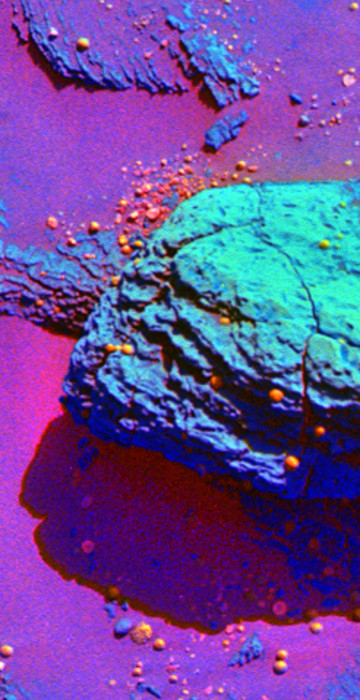
Science News
Greatest hits from Mars rovers
A year’s worth of highlights from NASA’s Spirit and Opportunity robots
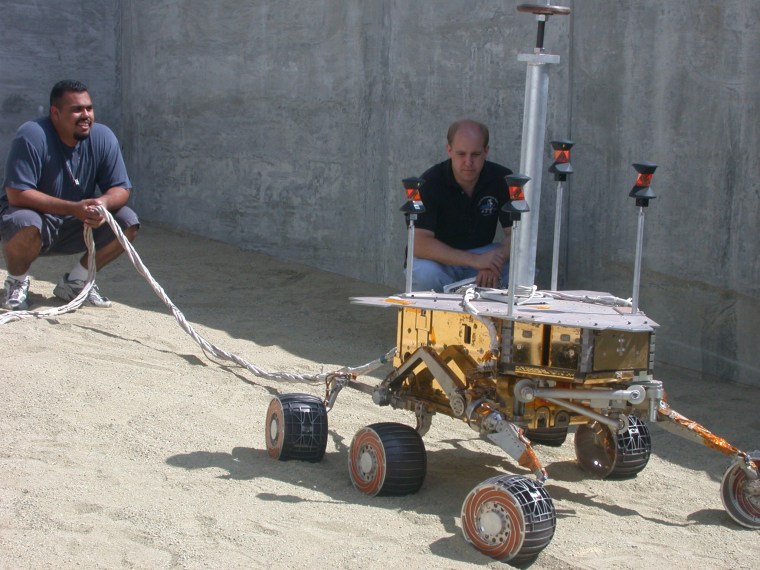
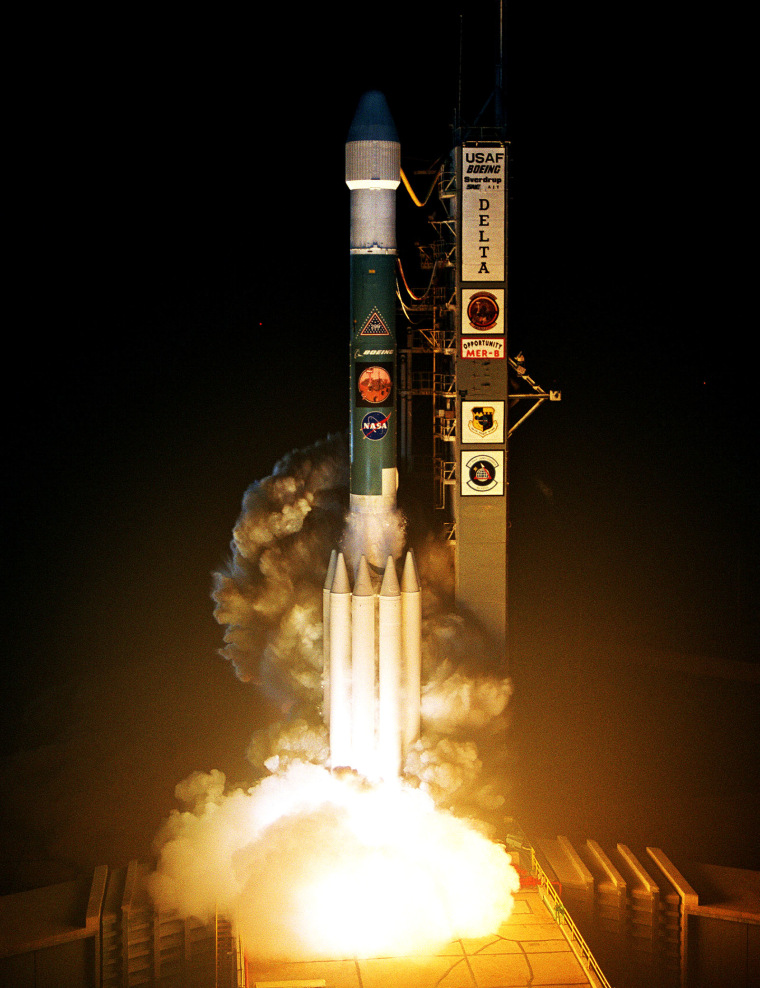
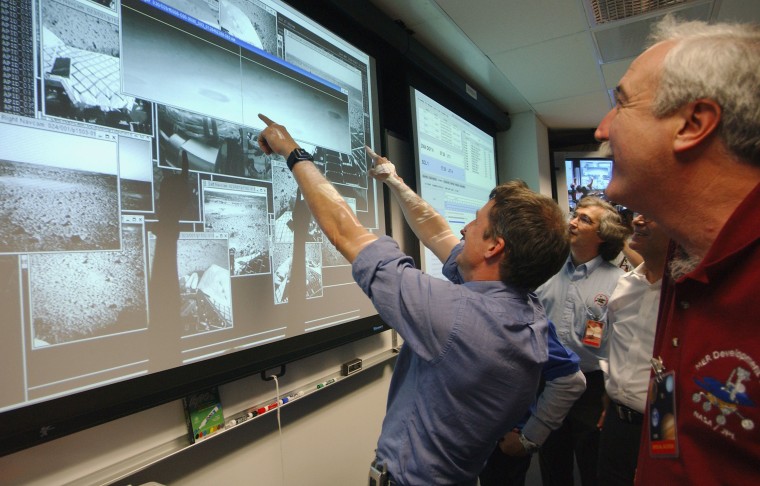
Look at that!
Principal rover scientist Steve Squyres points at Martian snapshots displayed on a big screen at NASA's Jet Propulsion Laboratory, beamed back from the Red Planet just after the Spirit rover's landing on Jan. 3, 2004. NASA Administrator Sean O'Keefe, at right, and mission team members watch as the images are added.
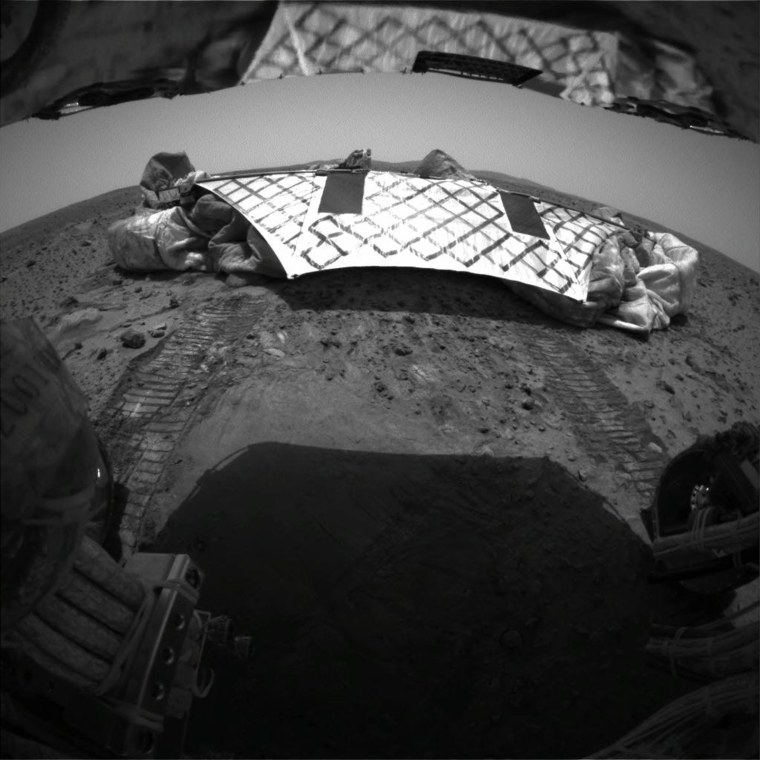
Leaving the nest
NASA's Spirit rover looks back at its own lander platform early Jan. 15, 2004, just after the mission team sent the robot out for its first spin on Martian soil. Spent air bags are crumpled along the sides of the platform. At the top of the image, the view is mirrored by the bottom of the rover's solar arrays.
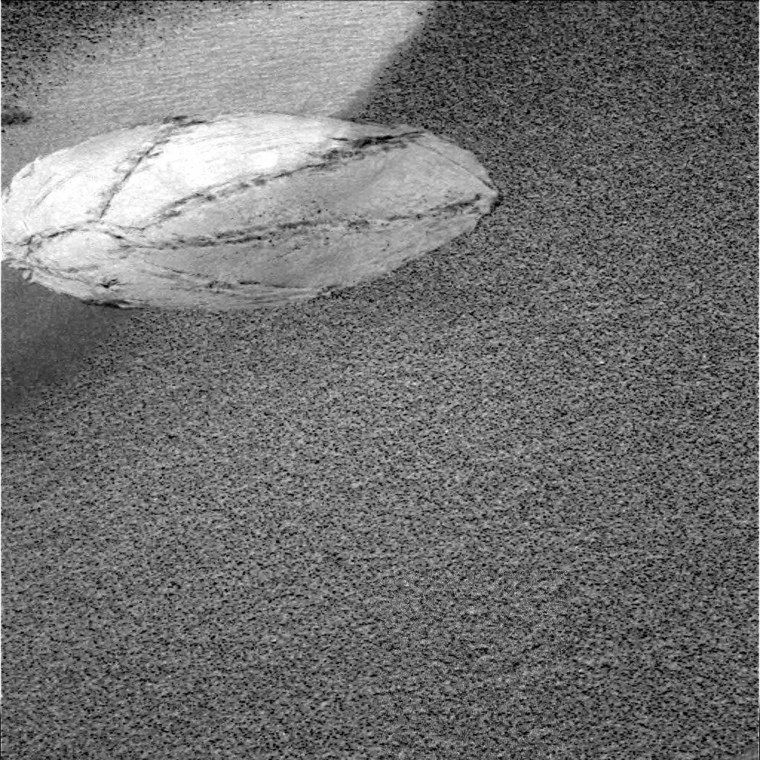
Rover's footprint
This image, taken by NASA's Opportunity rover and released Jan. 28, 2004, shows the "footprint" left by one of the rover's inflated air bags as the spacecraft bounced to its resting place on Martian soil. The circular region of the flowerlike feature is about the size of a basketball.
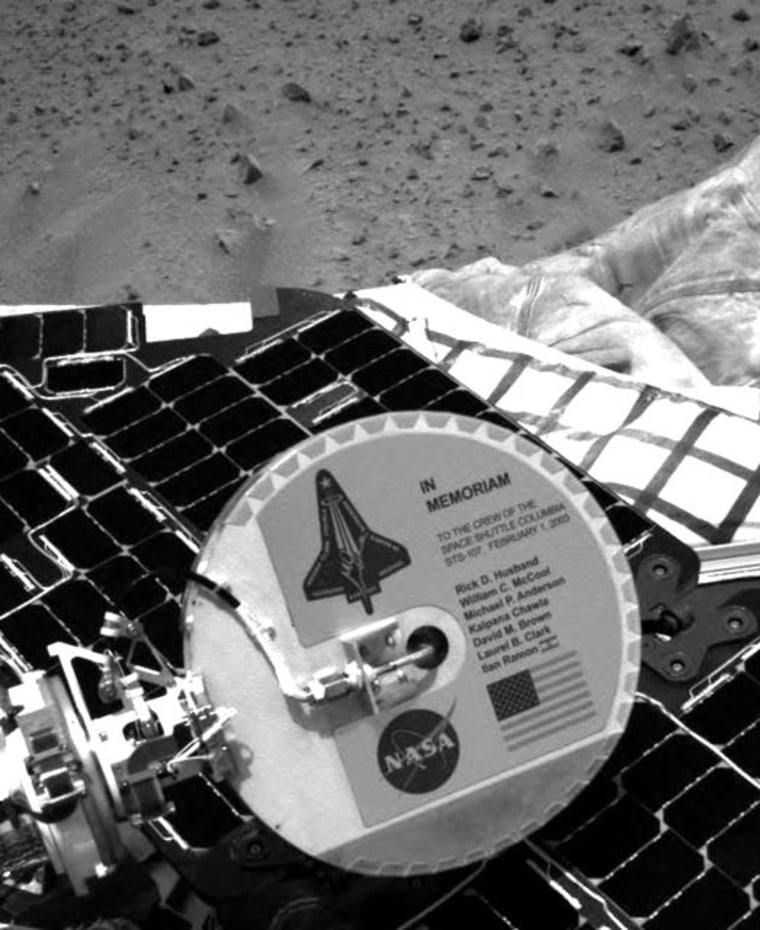
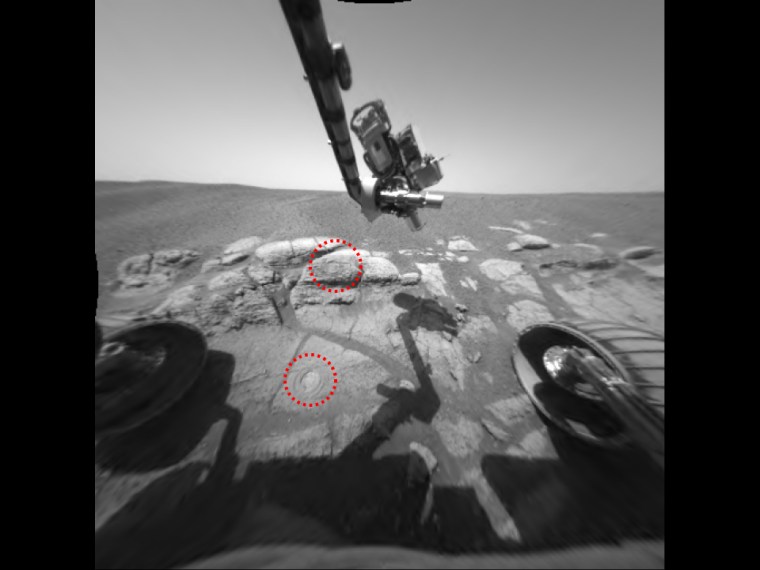
RAT bites
This image, taken by the Opportunity rover on Feb. 28, 2004, shows two holes that allowed scientists to peer into Mars' wet past. The rover's Rock Abrasion Tool, or RAT, drilled the holes (indicated by red circles) into rocks in the region dubbed "El Capitan." An analysis of the drilled rock helped scientists determine that this part of Mars was once drenched in water.
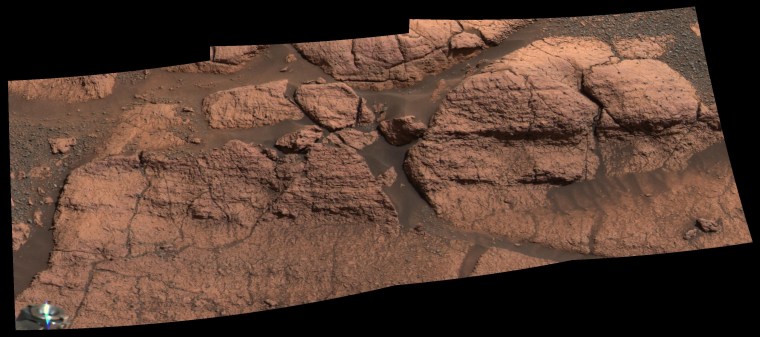
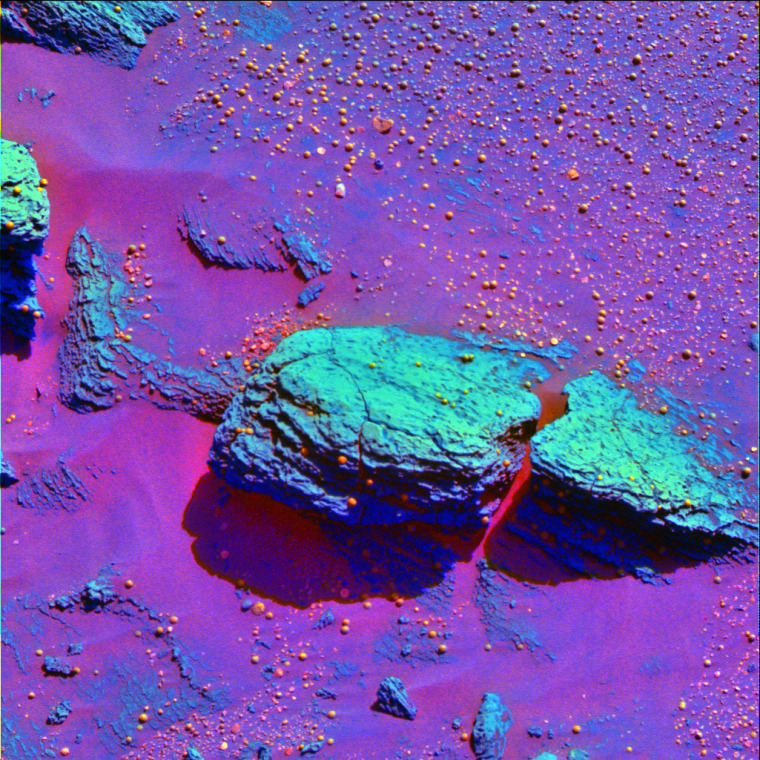
Purple Planet
A false-color image from the Opportunity rover, released Feb. 9, 2004, accentuates the differences between a green-looking slab of Martian bedrock and orange-looking spheres of rock. Scientists likened the "spherules" to blueberries embedded within and scattered around muffins of bedrock. The spherules are thought to have been created by the percolation of mineral-laden water through the bedrock layers.
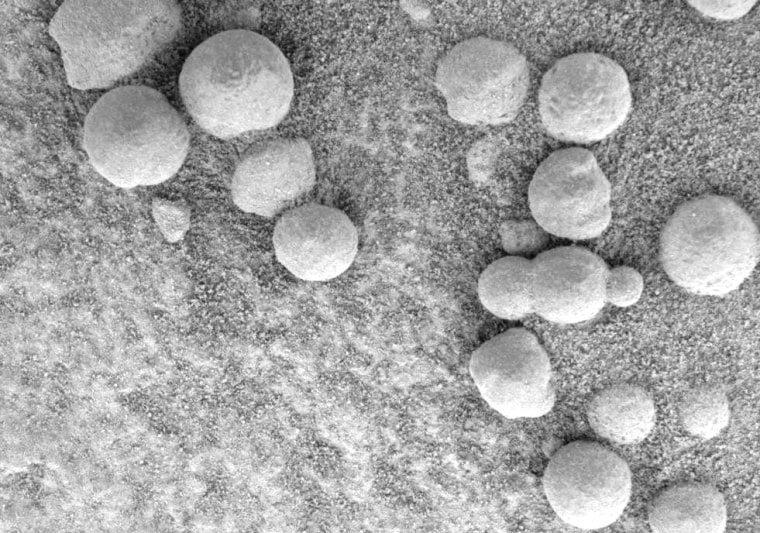
A scoop of berries
This microscopic image, taken at the outcrop region dubbed the "Berry Bowl" near the Opportunity rover's landing site, shows spherelike grains of rock or "blueberries." Of particular interest is the blueberry triplet, which indicates these geologic features grew in pre-existing wet sediments. This image was taken March 11, 2004.

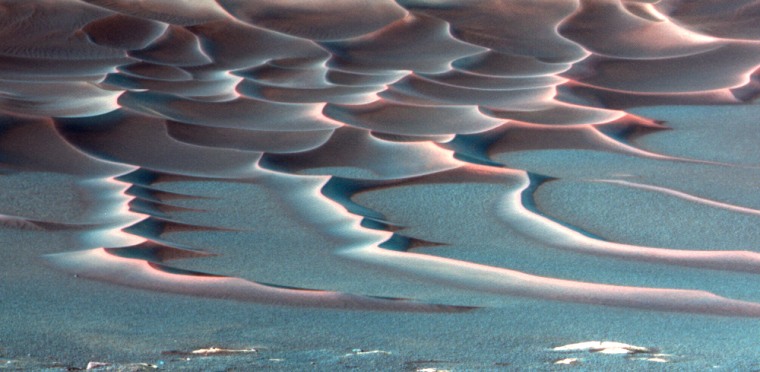
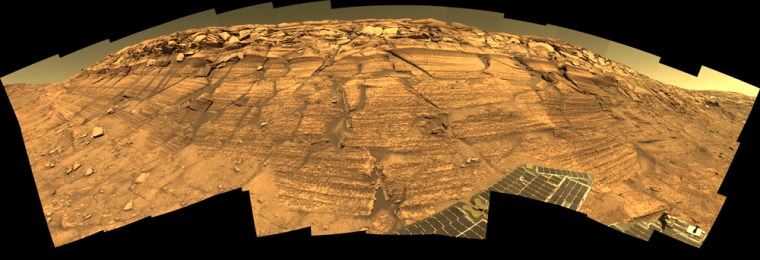
Wide-angle walls
NASA's Opportunity rover captured this view of "Burns Cliff" within Endurance Crater on Mars during the week of Nov. 13-20, 2004. The rover's solar arrays can be seen at the bottom of this true-color mosaic of 46 images. Because of the wide-angle view, the cliff walls appear to bulge out toward the camera. In reality, the walls form a gently curving, continuous surface.

Martian clouds
Clouds add drama to the sky above Endurance Crater in this mosaic of frames taken by the navigation camera on NASA's Opportunity rover on the morning of Nov. 16, 2004. The view spans an arc from east on the left to the southwest on the right. These clouds are part of a band that forms near the equator when Mars is near the part of its orbit that is farthest from the sun.
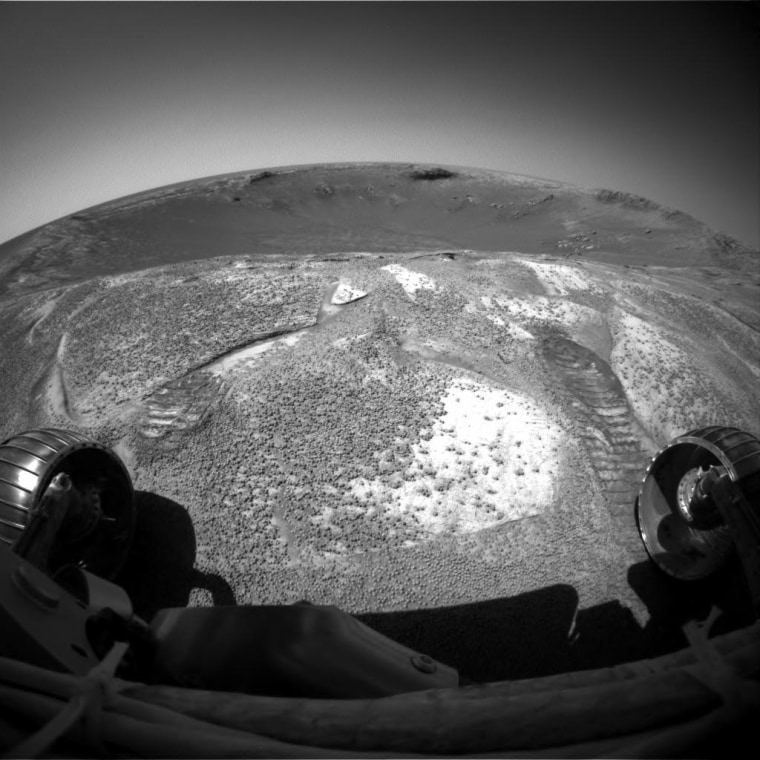

Alien junkyard
NASA's Mars Exploration Rover Opportunity gained this view of its own heat shield during the rover's 325th martian day (Dec. 22, 2004). The main structure from the successfully used shield is to the far left. Additional fragments of the heat shield lie in the upper center of the image. The heat shield's impact mark is visible just above and to the right of the foreground shadow of Opportunity's camera mast. This view is a mosaic of three images taken with the rover's navigation camera.